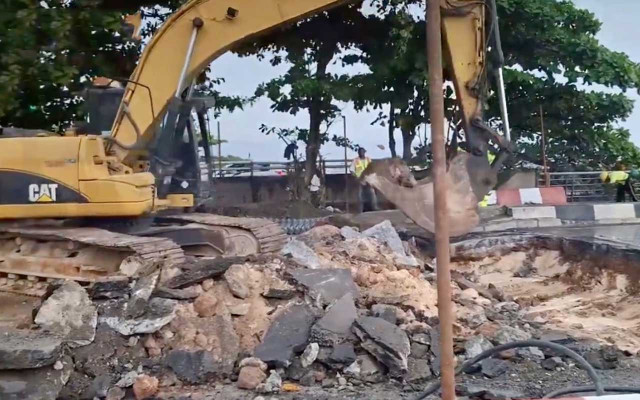LAGOS, NIGERIA - Lagos residents faced a challenging situation yesterday as they returned to work following the two-day Sallah holiday, coinciding with the start of repairs on Independence Bridge.
The Federal Government previously announced the bridge's closure to facilitate the necessary repair work, linking Victoria Island to Marina on Lagos Island, and subsequently Eko Bridge.
The Federal Controller of Works for Lagos, Olukorede Kesha, indicated that this closure would impact traffic flow from Ahmadu Bello Way and Adeola Odeku towards Marina, Eko Bridge, and Onikan by Zone 2.
She urged drivers to strategize their travel plans and utilize alternative routes to lessen traffic build-up.
Kesha expressed regret for the inconvenience and appreciated the community's cooperation in promoting road safety.
Furthermore, the Lagos State government had informed residents about the upcoming closure and its anticipated consequences as early as March 15, 2025. The Commissioner for Transportation, Oluwaseun Osiyemi, advised drivers heading off the Island to utilize designated alternative routes.
He identified the specific routes affected, highlighting the closure of the segment linking the National Open University of Nigeria (NOUN) through Bonny Camp Bridge to Independence Bridge for vehicle access.
Additionally, the service lane at Bonny Camp Underpass Bridge (inbound Independence Bridge) would be closed off. However, the service lane from Ahmadu Bello Way to Ozumba Mbadiwe remained open.
While the initial closure on April 1 coincided with the Eid-el-Fitr holiday and caused minimal traffic disruption, the impact became significantly worse yesterday—the first workday since construction began—as Lagos's commercial heart experienced severe traffic congestion.
Commuters heading to the Mainland found themselves stuck in long queues, with heavy congestion reported on alternative routes. Traffic delays were noted from Lekki through Victoria Island to Falomo Bridge and beyond.
Victoria Island and Ikoyi were particularly affected, with numerous streets experiencing gridlock. Areas surrounding Victoria Island, such as Falomo, Law School, Ahmadu Bello Way, and the former Old Bar Beach, had extensive queues as motorists struggled to exit the area.
The combination of repair work and early morning rain in some parts of the city created chaos, resulting in severe traffic slowdowns that delayed people's arrival at work, leading many to walk significant distances.
Many commuters took more than six hours covering what typically would take two to three hours, resulting in a surge in transportation fares by over 100 percent. For example, the bus fare from Iyana Oworo to Obalende increased from N600 to N1000, while the fare from Obalende to Ajah rose from N1000 to N2000.
Commercial bus driver Godwin Udo expressed his frustration at missing out on the fare increase, as his bus was not authorized to operate on the Ajah route.
Motorist Murideen Adeolu shared his experience of leaving the Island at around 1:00 p.m. while trying to leave Victoria Island; by 3:00 p.m., he remained trapped in traffic. "Is this what we have to endure for two months? The government must intervene quickly to alleviate this situation before it worsens," he said.
Meanwhile, pedestrian Johnson Udo reported spending over two hours on a journey that usually takes just 10 minutes.
He stated, "I had a noon appointment at Walter Carrington Crescent, but after spending two hours from CMS, I had to disembark from the bus at Bonny Camp and walk to the meeting due to the traffic. Afterward, I had to walk back to TBS around 3:30 p.m."
Osiyemi reiterated the need for drivers to be patient, stressing that the partial closure is part of a traffic management strategy for the Federal Ministry of Works' rehabilitation of the road's asphalt surface.




















